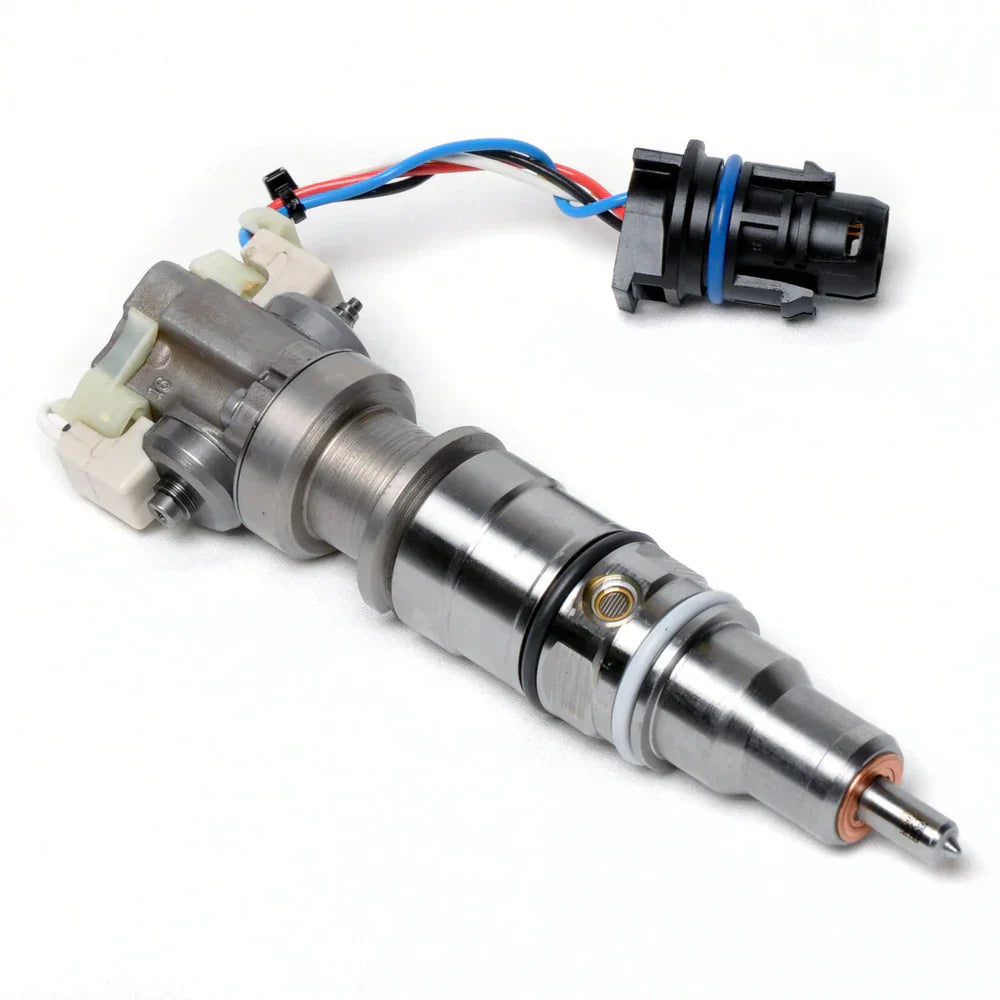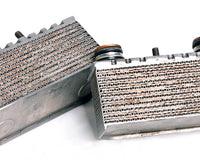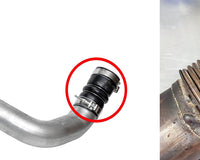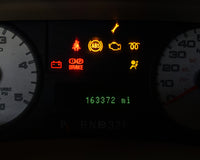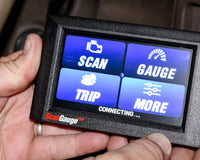6.0 Power Stroke Injectors | Ford
Are you having trouble with your 6.0 Power Stroke injectors? While the problem may be the fuel injectors themselves, there are other problems that can lead to fuel delivery issues. Do you need new 6.0 Power Stroke injectors, or is there something else keeping your engine from getting the right amount of fuel? How do you pick the best aftermarket injectors for 6.0 Power Stroke, and why would you want to choose them over stock injectors? Here’s what you need to know to answer these questions.
___________________________________________________________________________
*6.0 Power Stroke injector kit
How Do My Engine’s Fuel Injectors Work?
If you’re familiar with Power Stroke fuel injectors, you probably know how an indirect injector in a gas engine works. The ECU uses data from several sensors to figure out how much fuel each cylinder needs and when. It then activates an electromagnet attached to a valve in the injector, spraying fuel into the intake manifold. Common rail systems used on modern diesel engines use a similar system, but they require more pressure to spray fuel directly into the combustion chamber. This requires a fuel system that can reach pressures as high as 25,000 PSI. The parts needed to handle this pressure makes the fuel injection system expensive. Maintaining this pressure also results in high parasitic losses, and it makes the system very sensitive to fuel quality. While early common rail systems were on the market when the Power Stroke 6.0 debuted, engineers took another approach to deliver accurate fuel delivery at a lower cost.
The Power Stroke 7.3 and 6.0 use Hydraulically actuated Electronically controlled Unit Injectors (HEUI). There are fuel lines that supply low pressure (50-60 psi) to a passageway inside of the cylinder head and into a reservoir inside of the fuel injector. The average cycle time, or “pulse width,” is somewhere around two milliseconds on these engines. During those two thousandths of a second, the fuel valve has to open just long enough to let the right amount of fuel exit the reservoir and spray into the combustion chamber. To do this, each injector has a pair of electromagnetic-operated spool valves that regulate the flow of high-pressure oil into the top of the fuel injector. This allows rapid, precise control of fuel delivery.
This system uses engine oil as a hydraulic fluid, pressurizing it with the High Pressure Oil Pump (HPOP) that sits over the engine valley. This pump is fed pressurized oil from a reservoir that is fed directly by the oil cooler. A working HPOP should pressurize oil to approximately 600-700 PSI at idle, increasing to 3,000-4,000 PSI at wide open throttle (WOT). This high-pressure oil is regulated by what is called an Injection Pressure Regulator, or IPR valve. The fuel only needs to be pressurized to 50-60 PSI feeding into the injector, resulting in much lower parasitic losses overall when compared to common rail injection.
The Fuel Injection Control Module (FICM) operates the solenoids that control the flow of oil to the spool valves. By changing the timing and length of oil flow, the FICM can match fuel delivery to current load demands and engine RPM.

This complex system can lead to a lot of confusion when trying to diagnose problems, especially if you assume that it works like an indirect injection system or a common rail system. Many problems that are blamed on injectors are actually caused by issues with the hydraulic oil side of the system. Fortunately, solving these problems is usually much cheaper than installing new 6.0 Power Stroke injectors.
What Common Issues Can Be Mistaken for Fuel Injector Failure?
A failing injector won’t deliver the right amount of fuel at the right time. However, a perfectly functional injector still won’t work right if it isn’t getting the oil it needs to operate. Often, problems can be traced upstream to issues with the HPOP, oil standpipes, oil rails, or FICM.
Oil cooler problems may lead to injector problems by reducing the amount and quality of oil available to the HPOP. A malfunctioning oil cooler won’t keep oil temperatures under control. The viscosity of engine oil gets lower as it gets hotter, which may lead to problems feeding the HPOP and injectors. Cracks inside the cooler can let coolant and oil mix, creating a sticky emulsion that clogs engine coolant passages. A properly functioning engine oil cooler and oil filter system can help to keep injectors working well.
One of the FICM's main functions is ramping the truck’s 12-volt electricity into 48 volt current. This current is needed to operate the solenoids and operating the spool valves that supply oil to the injectors. As the FCIM ages, its output may drop below 48 volts, keeping it from consistently opening and closing these solenoids. The FICM mounts to the top of the valve cover on the driver's side, where it experiences extreme heat and vibration. This tends to lead to faster degradation than other major electrical components. These problems can be compounded by charging and battery issues, which add strain to the FCIM as it tries to deliver enough current. FICM problems usually first show up as hard starting and rough running, caused by intermittent injector firing.
Speaking of heat and vibration, the fuel injector wire harness is subject to both, which can lead to weakening and abrasion of wire insulation. Over time, this may lead to shorts and poor connections that can keep the fuel injectors from working correctly. It’s a good idea to check the harness when trying to diagnose injector problems. Sometimes, moving these fragile wires while working on other parts of the fuel system or engine, can lead to failure. Extra care should be taken when releasing the harness from the rocker carrier when working on the injectors.
The original Snap To Connect (STC) connectors - on the 2005 and newer 6.0L engines - between the HPOP and the branch tubes that feed the injectors can fail over time. The resulting oil leaks prevent the injectors from getting enough pressure to operate. Upgrading from quick disconnects to threaded O-ring connections may reduce oil leaks between the pump and the tubes.
Why and How do Power Stroke Injectors Fail?
If they’re properly maintained, stock 6.0 Power Stroke injectors can deliver 100,00 miles of trouble-free service. Like any mechanical component, normal wear and tear will lead to failure, while poor maintenance may lead to premature failure.
Due to their design, these fuel injectors are sensitive to poor quality fuel and oil. Over time, sludge, carbon and other buildup on the spool valves make them difficult to open and close. Typically, the first signs of a failing injector show up only when the engine is cold. A combination of wear and thick, cold oil keeps the weakened spool valves from opening and closing fast enough to keep up with the engine. This results in too little or too much fuel being added to the cylinders, making the engine run rough. Once the engine and oil are up to operating temperature, the valves can move fast enough to do their job, and the engine runs fine. Even though you may feel like the engine is running normally, there very well may be peak performance issues, especially with heavy engine loads. Frequent oil and filter changes (5,000 miles or less) using high quality oil can help keep the valves clean. Some owners swear by anti-stiction oil additives, which help remove deposits that can keep the spool valves from moving.
How do 6.0 Power Stroke Performance Injectors Work?
Because common rail diesels are backed by a high-pressure fuel supply, it’s relatively straight forward to add more fuel to the combustion chamber with bigger injectors. However, with an HEUI system, each injector acts as both delivery system and supply. That means you need to consider both the reservoir size and nozzle size.
The maximum amount of fuel supplied by the injector is limited by the size of its reservoir, while the speed at which the fuel can be delivered is determined by the nozzle size. The best aftermarket injectors for 6.0 Powerstroke applications match the reservoir and nozzle size to deliver fuel in the same time frame as the stock injector. If the nozzle is too big, the fuel will be added too quickly, and the engine will have trouble running at low speeds. Using a high output injector in low demand situations also increases unburnt fuel, which leads to increased heat and more smoke from the tailpipe. Generally speaking, installing a faster flowing injector usually improves top end power, while sacrificing low end power. Owners who primarily use their trucks and vans for hauling tend to avoid upgrading to 6.0 Power Stroke performance injectors and stick to OEM equivalents.
Bigger injectors do not automatically lead to more power. Pulse width controls the amount of fuel sprayed, so injectors with different reservoir sizes and the same nozzle will flow the same amount, unless the nozzle can spray fast enough to empty the reservoir. Likewise, injectors won’t spray extra fuel unless that fuel is needed. If you switch to a larger injector, and the engine suddenly runs poorly, it’s probably another problem with the fuel injection system and not the injector itself.
If You Want Your 6.0 Power Stroke to Last, You Need Parts from BulletProof Diesel
Bullet Proof Diesel specializes in parts that address common failure points in diesel engines, so you can keep your rig on the road. We have replacement FICMs, oil coolers and more, so you can reduce problems with your 6.0 Power Stroke’s fuel injection system. Don’t want to deal with installing major engine components? We have a network of preferred installers that have experience using our parts, so you can be sure the job is done right the first time.

